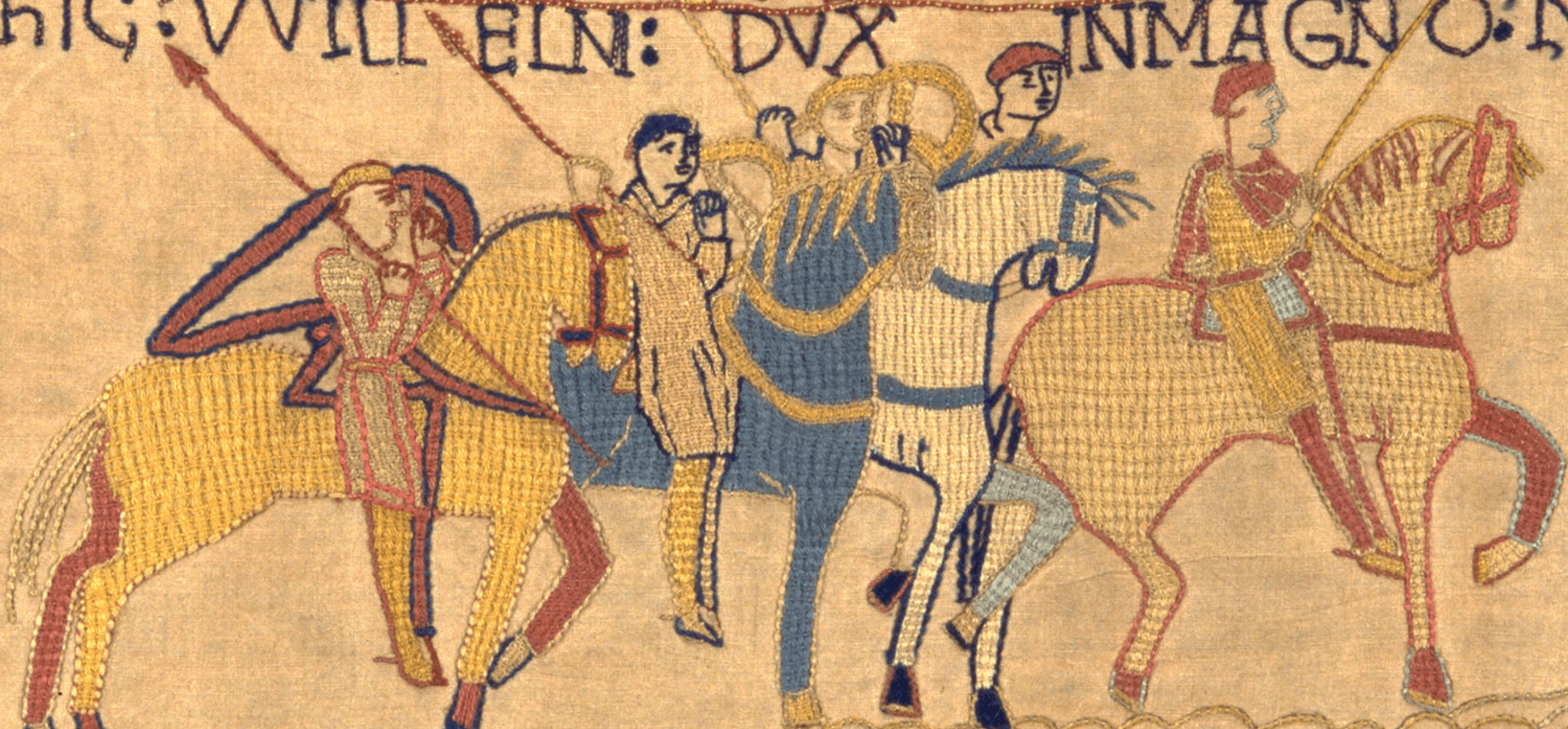At nearly 70m long and 70cm tall, Reading's Bayeux Tapestry is an awesome artefact. You can spend endless hours searching through the vibrant scenes of this epic embroidery, finding something new each and every time.
In this blog, Reading Museum's resident Bayeux expert, Ben Bishop, pinpoints the many fine details of our replica Bayeux Tapestry that was created in 1885-1886. Discover what these teach us about the timeless story of the Norman conquest of England, and see some of the particularly interesting artistic aspects of both the original embroidery and our Victorian copy.
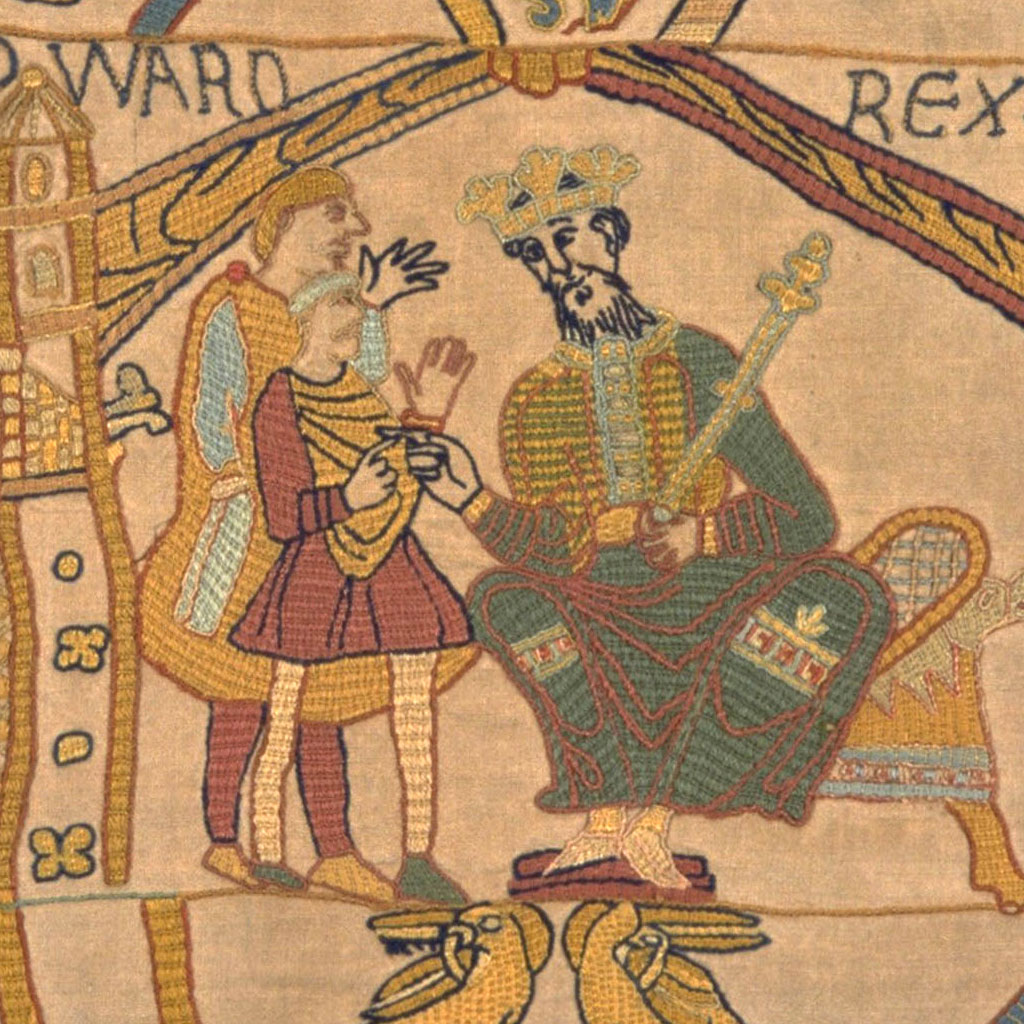
The first scene from our replica Bayeux Tapestry, showing Kind Edward in court.
Reading's Bayeux Tapestry
The Bayeux Tapestry that hangs in Reading Museum across the Bayeux Tapestry Gallery was sewn to be as close to the original as possible.
Besides the repairs and alterations that the original received after it was first sewn in the Norman era, you are seeing the Bayeux Tapestry almost exactly as it was first produced, except for the striking blue border that bears the personal design and name of each embroiderer.
The only other uniquely Victorian addition is where one naked man had his modesty protected with pants! The embroiders had copied these from a set of photographs that had been ‘cleaned-up’ by the male staff at the South Kensington Museum. Read more about the tapestry's history.
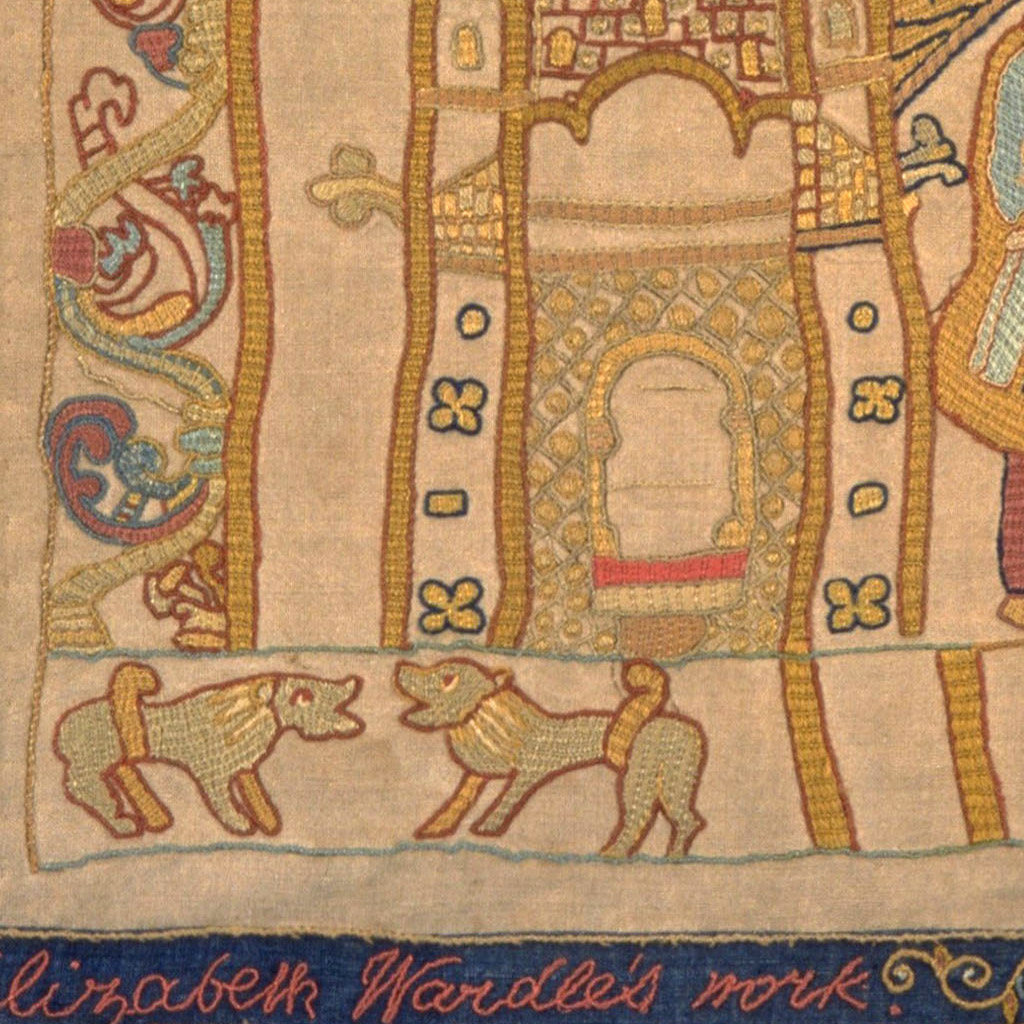
Right at the beginning of our Bayeux Tapestry is the name of Elizabeth Wardle, the maker of this scene as well as the leader of the Leek Embroidery Society.
Searching for the details
The Bayeux Tapestry is captivating. It was beautifully embroidered with multi-coloured horses and ships, bright birds and mythical beasts. Many key characters are named. It is incredibly detailed and can tell us a large amount about the lives and the fashions of the Normans and Anglo-Saxons. Figures of ordinary people can be seen alongside their rulers, in an embroidery that took hundreds of hours to produce.
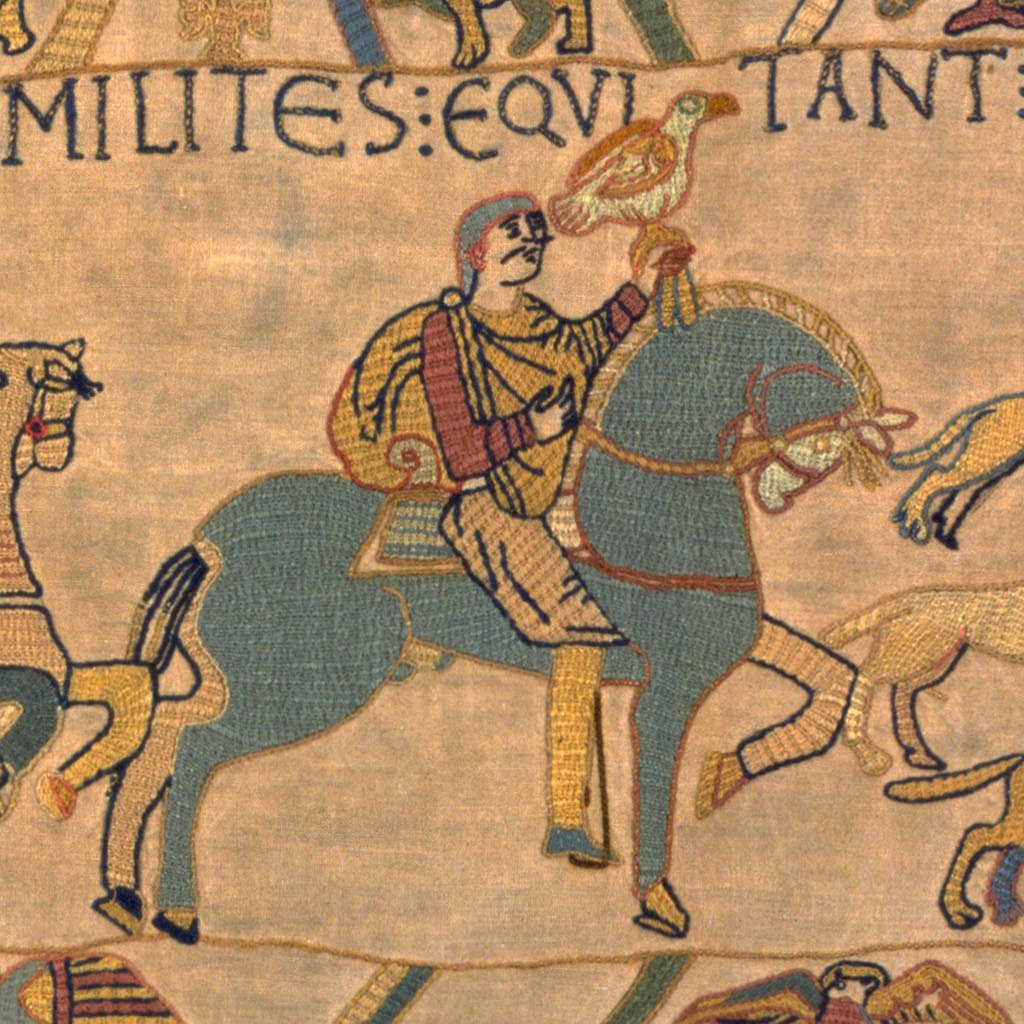
Harold Godwinson, here on horseback carrying his hawk.
Clothing, equipment, and style
The medieval designers of the tapestry, and the embroiderers themselves, knew the features of the world they embroidered. Find the bells at the throats of the hunting dogs necks. Each warrior’s coat of mail was a painstaking process of embroidered rings and borders, with a square at the owner's neck. Look out for the spurs at the feet of the riders, the stirrups that keep them steady and the brooches at their shoulder or throat to keep their cloak from falling. Medieval helmets were made of bands of iron fitted together, even these are picked out in the tapestry, sewn with minute lines to depict each piece of metal.
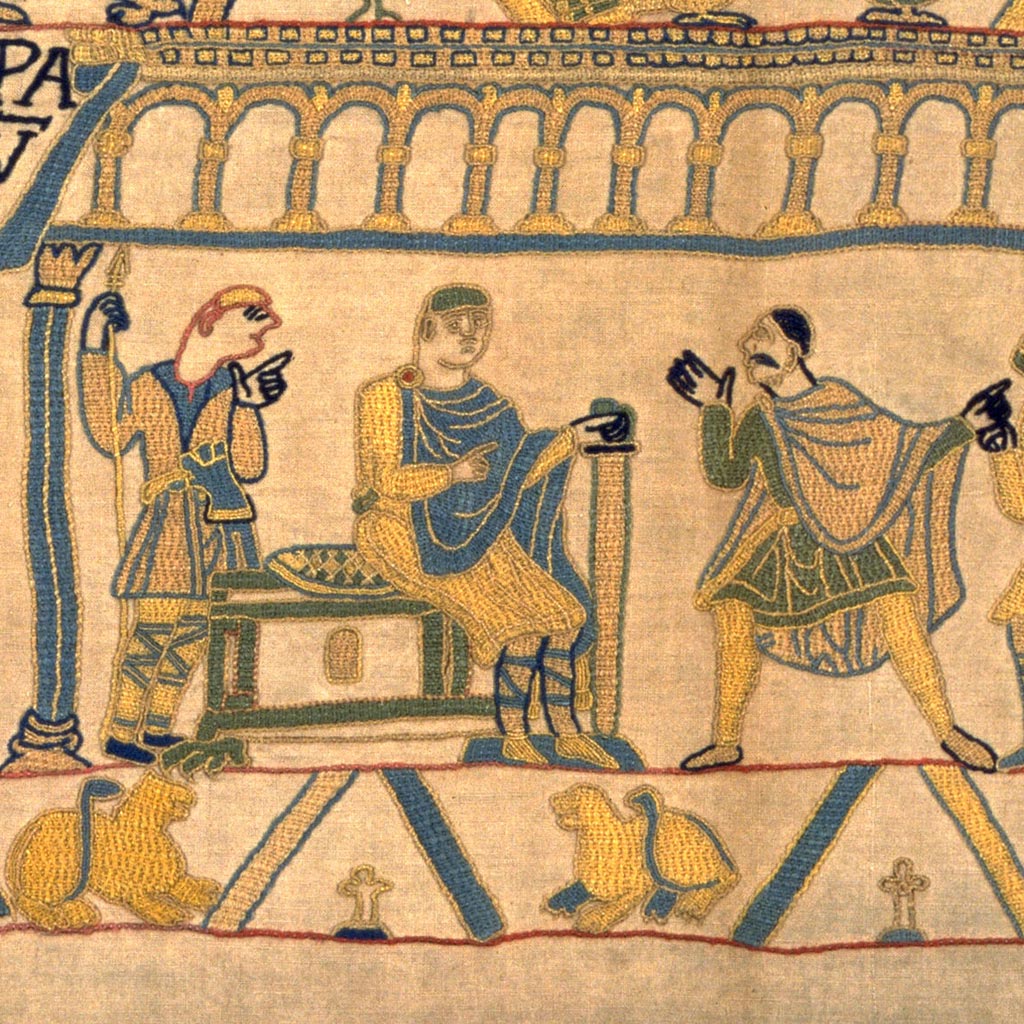
William, the future king of England, at his court in Normandy.
One scene at a time
Reading Museum’s Bayeux Tapestry was embroidered in sections, each sewn by one person in their own particular style. Look out for their signature style, the colours they used and the way they produced the scenes. The vast majority of medieval people were illiterate, royalty and nobility among them. They would not have understood the Latin captions squeezed between the main scenes narrating the story and only seen the characters journeys. Therefore, the Bayeux Tapestry was separated into chapters, like a graphic novel. Look out for the trees, buildings and coloured bars that break up the story and help build tension, leaving the audience wanting more.
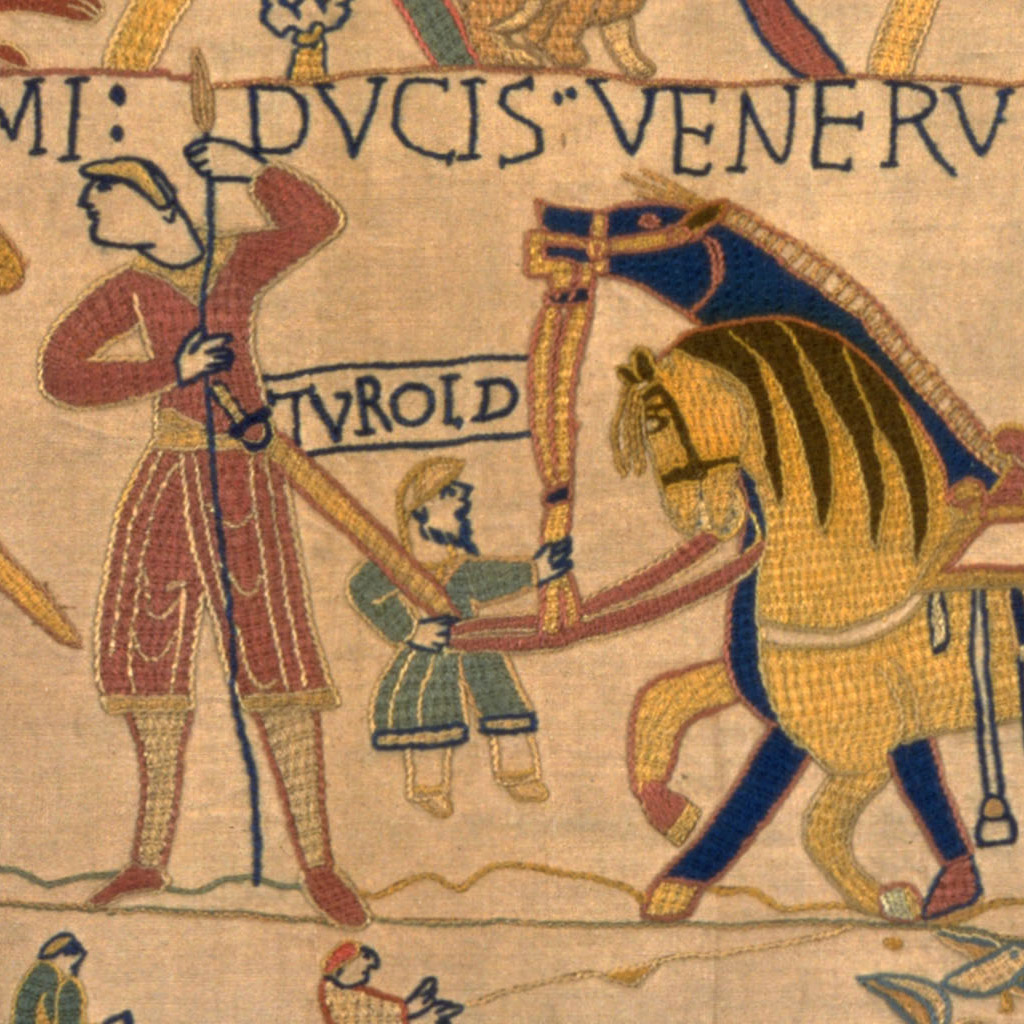
William's men.
The borders
Alongside the scenes of medieval war, politics and adventuring come the border scenes. These are some of the most visually impressive in the entire embroidery. Dragons, griffins, lions and deer prance across the piece. Some are part of the fables and myths sewn in the borders of the main panel. These allude to medieval ideals of morality, like the wolf and the crane below whose moral is to expect no reward for serving the wicked.
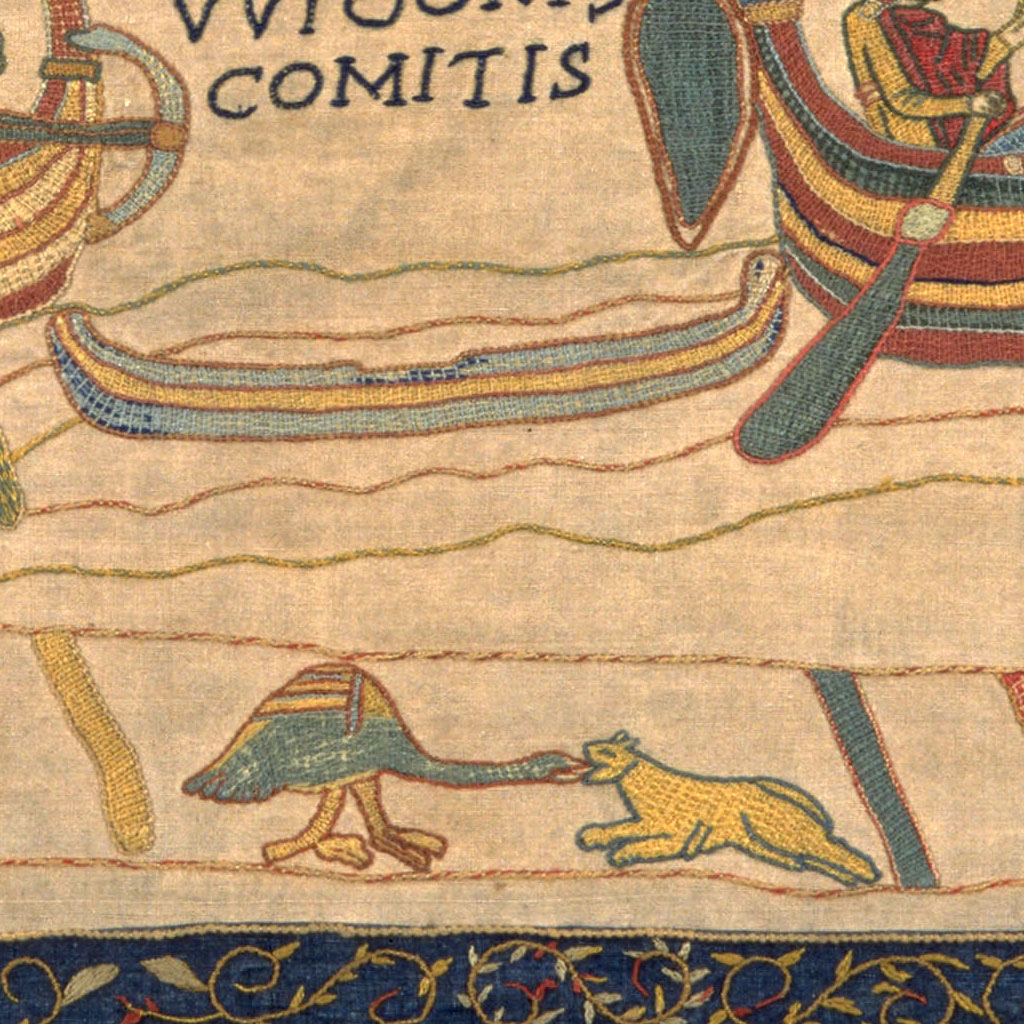
A crane and a wolf in the border of our replica Bayeux Tapestry.
The case of the disappearing bodies
The Bayeux Tapestry was made by skilled embroiderers, but there are fascinating errors in the work. These were copied exactly by the ladies of the Leek Embroidery Society. Many medieval embroiderers made no attempt at embroidering crowds or creating perspective and the feats of the Bayeux Tapestry embroiderers are impressive, but not perfect. Look out for the floating heads, the legless bodies and the headless horses in the crowd scenes throughout the tapestry.
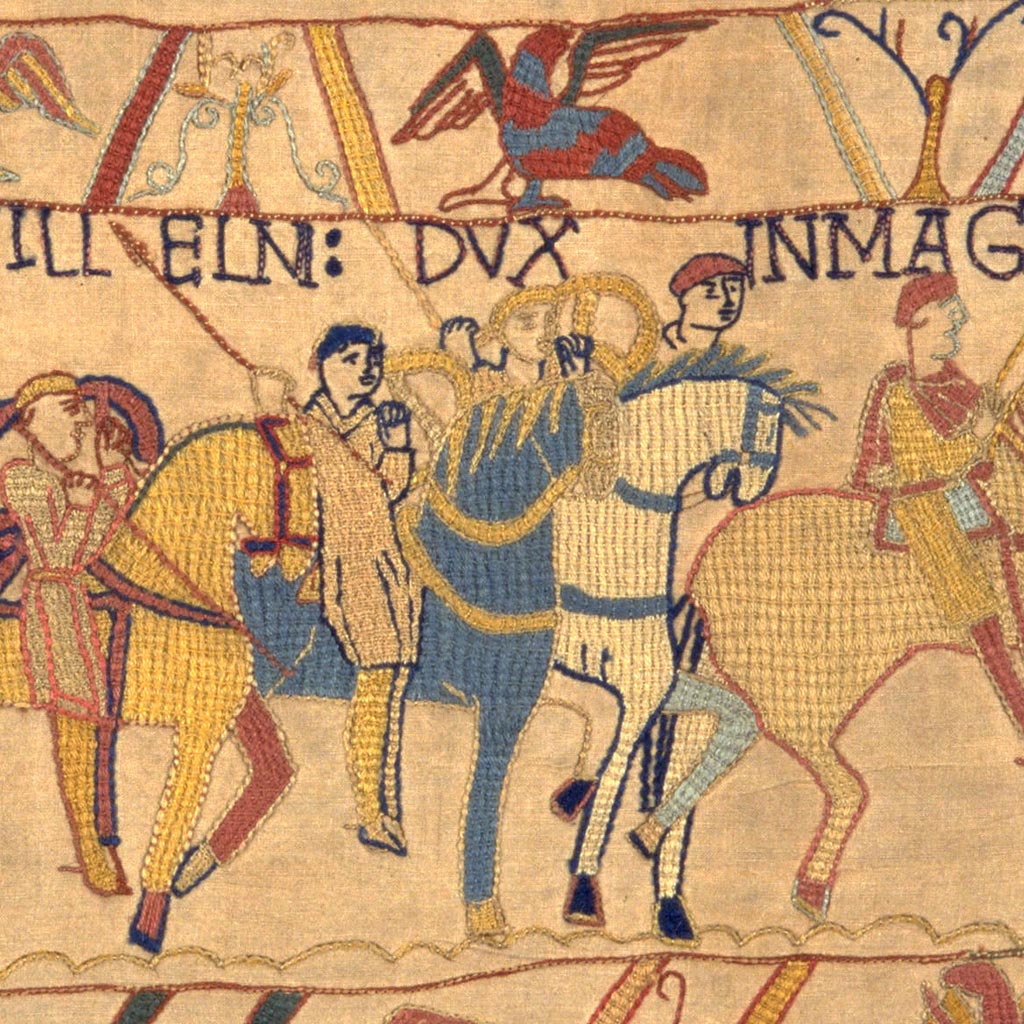
As the Norman soldiers ride to war, notice that there are more heads than bodies!
The missing scenes
The end of the original Bayeux Tapestry is missing and historians only have a best estimate at what was embroidered onto it. And our replica finishes in kind, with the Battle of Hastings won by the Norman attackers, and the vanquished King Harold dead on the battlefield.
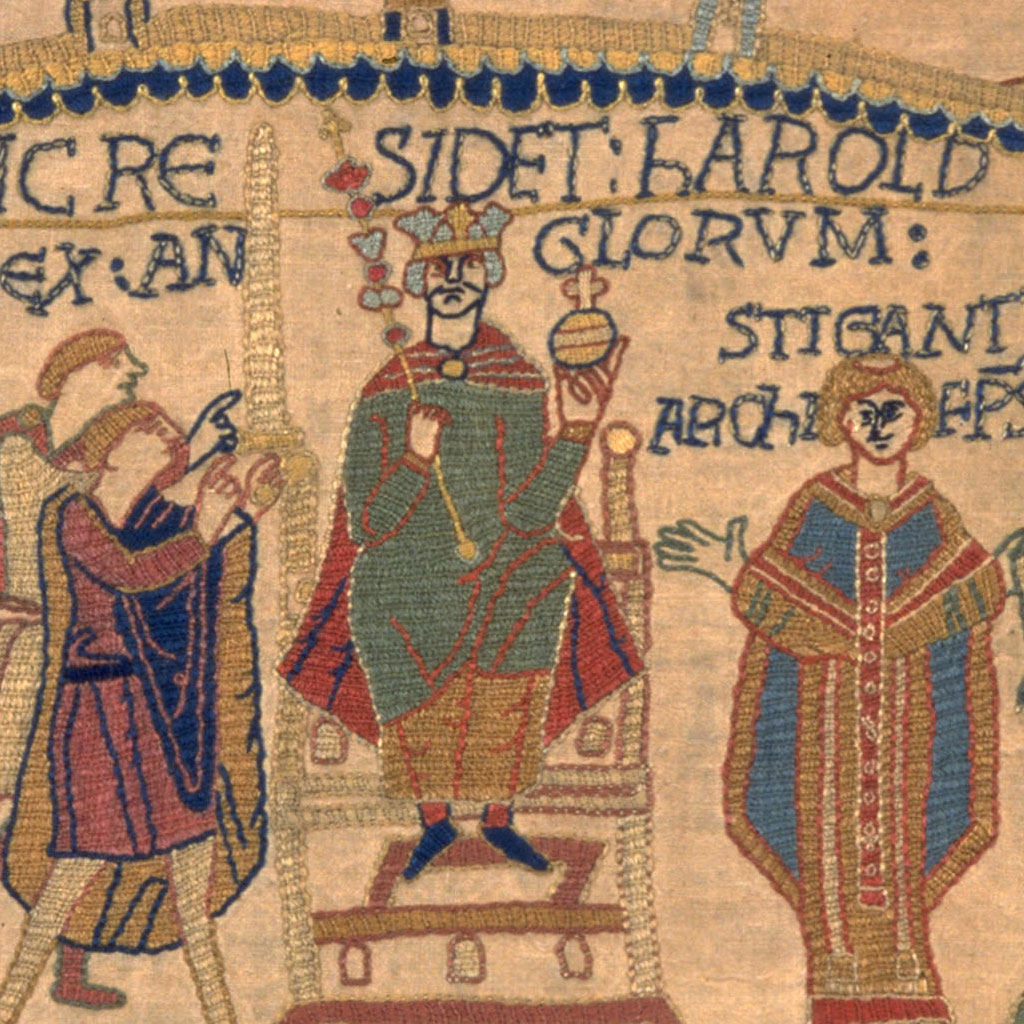
Harold's coronation. We know what happens next!
There are lots of ways you can enjoy and experience the magic of our replica Bayeux Tapestry from home! Explore our free online version of the Tapestry. Or book onto one of our online guided Bayeux tours.
